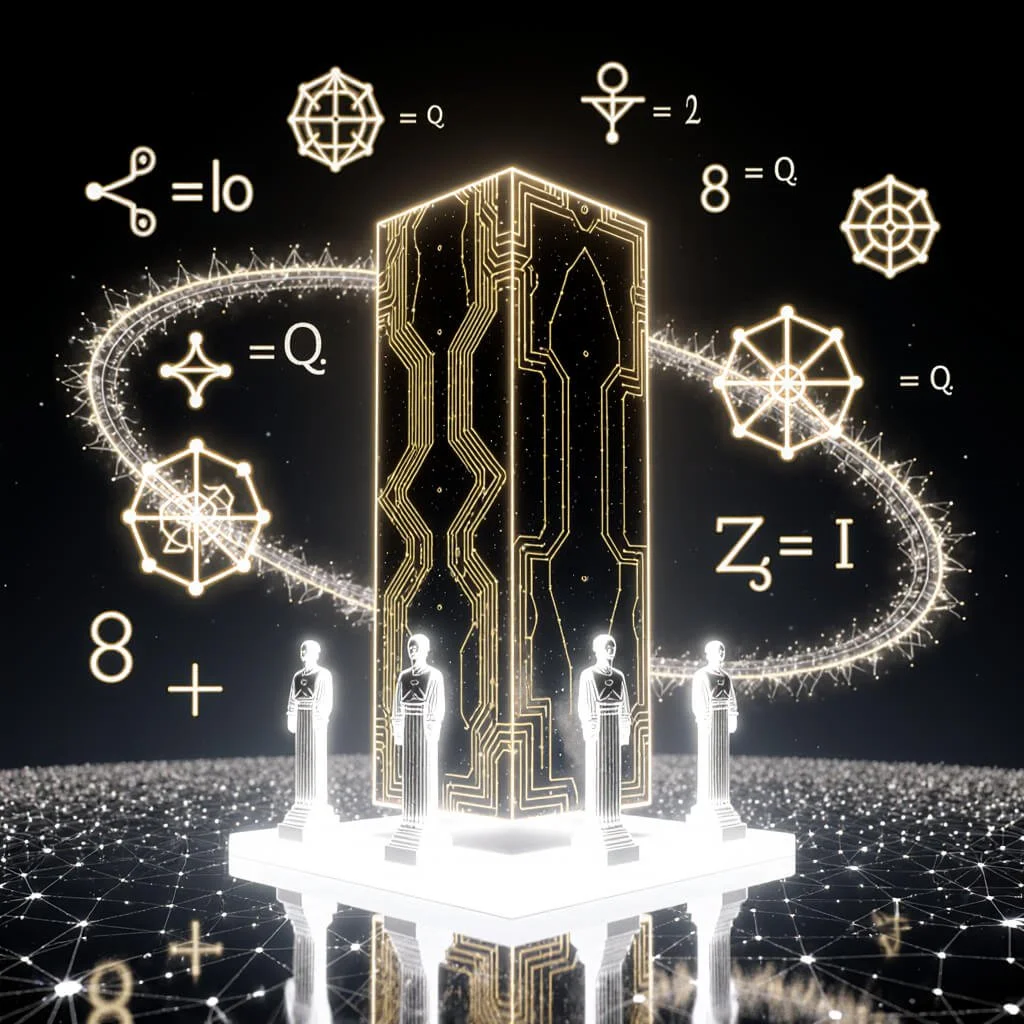UAP Disclosure 2024: Strategies for Success
Navigating Tensions Between Transparency and Security in the Emerging Era of Non-Human Intelligence
Hypercube UFO Captured Over Sydney
Summary
The current paradigm views UAP narrowly as physical threats, risking blindspots
Must balance security scrutiny with socio-cultural perspectives
UAP display advanced tech justifying defense analysis
But exclusive threats focus overlooks historical lessons
Balanced framework needed integrating scientific and cultural insights
Strategic transparency navigates transparency-security tensions
Inclusive taxonomies and coordination strengthen analysis
Tailored global communications enable smooth assimilation
Reforms incentivize responsible disclosure protecting sources
Geopolitics colors UAP transparency debates across rivals
Hypderdimensional Alien Crystal Skyship Vaporwave
UAP Disclosure 2024
As public and Congressional interest mounts around unexplained sightings and alleged retrievals of advanced technology of unknown origin, legislators sponsoring transparency provisions aimed at unraveling the mystery find themselves caught between demands for openness and intelligence agencies wary of compromising sensitive sources and methods.
Journey to a New World of Wonder
Whistleblower Accuses Government of Cover-up, Demands Release of "Firsthand Knowledge"
David Grusch, a former Air Force intelligence officer turned vocal whistleblower, electrified public debate earlier this year by claiming the government is covering up a secret program to retrieve and study non-human technologies from crashed UAPs. Grusch argues the government has a duty to reveal the truth, stating he has "firsthand knowledge" he has so far been barred from disclosing publicly.
"Whether you believe my allegations or not, this is a government transparency issue at large," Grusch told NewsNation host Elizabeth Vargas.
Grusch has blasted Congressional efforts to pry open long-held government secrets as "the greatest legislative failure in American history," calling the recently passed 2023 UAP Disclosure Act a "total failure" for removing provisions seen as too risky for national security agencies.
Transparency Caucus Pushes Boundaries, Meets Resistance
Members of Congress who support pushing for answers, like Rep. Eric Burlison (R-MO) of the Congressional "UAP Transparency Caucus," have increasingly pressed intelligence agencies for information and justifications behind ongoing secrecy. But they report facing significant "pushback."
"There certainly is pushback from the intel community against us having access to this information," said Burlison about Congressional oversight efforts.
Two key transparency provisions in the 2023 UAP Disclosure Act were removed after pressure from agencies like the House Intelligence Committee and Department of Defense. One required establishing a disclosure review panel, while another mandated government control over any alleged "non-human" artifacts held by contractors.
Critics see a familiar pattern of reflexive secrecy that has kept sensitive government UAP programs hidden for decades. Supporters argue there are legitimate risks posed by disclosing sources and methods around the highly classified issue.
Ancient Alien Artifact Recovered in Afghanistan Rewrites History
Walking a Geopolitical Tightrope
The escalating public debate has global security implications far beyond satiating public curiosity. Demands for transparency focused solely on U.S. government secrecy rarely consider wider geopolitical contexts, in which America's strategic rivals also conduct UAP-related intelligence operations likely unknown to one another.
Amid increasing militarization of space by the U.S., Russia and China, unauthorized disclosures pose asymmetric risks across nuclear-armed competitors. Great power rivalry colors debates on transparency - while Russia and China urge international UAP data sharing, U.S. agencies remain wary of enabling foreign collection against sensitive American programs.
Managing disclosure and verification of highly advanced aerial technologies requires navigating tensions between the US, Russia and China as military rivals. Unauthorized revelations could enable adversaries to exploit sensitive intelligence for asymmetric advantage.
Therefore, prudent policy demands exploring bilateral and multilateral frameworks for structured UAP tech sharing under verified exchange regimes resembling Cold War arms control pacts. These allow incremental transparency by instituting robust monitoring against militarization by peer competitors. Thereby, the seeds get sown for cultivating collective security humanitarian doctrines seeking mutual advancement despite lingering distrust across nuclear armed states.
Majestic Crystal Skyship UFO
The Fight for Transparency Will Continue
The quest for definitive answers on the UAP issue shows no signs of fading from public or government awareness. Congress and the new Congressional Transparency Caucus continue seeking accountability from often reluctant Executive Branch agencies determined to protect sources and methods for investigating what many officials concede is a legitimate mystery with sobering defense and intelligence implications.
Boldly Going Into a New World of Possibility
Rethinking Our Approach to Unidentified Phenomena
With lawmakers asserting military retrieval of craft demonstrating technology exceeding human capacities, the emerging discipline analyzing Unidentified Aerial Phenomena (UAP) will likely gain legitimacy within years (1). However, scientist Michael Glawson argues narrowly equating UAP solely as physical threats overlooking richer sociocultural perspectives risks significant opportunity costs (2). This white paper analyzes his critique before proposing balanced recommendations integrating scientific, social and security considerations.
U.S. Special Forces Commander Poses in Front of a Recovered UAP
Averting "Catastrophic Disclosure": The Case for Strategic Transparency
As public fascination mounts over alleged secret government reverse-engineering of advanced aerial technologies, an increasingly vocal group of former officials argue waiting risks chaotic and damaging revelations better avoided by orderly declassification.
Captured Alien Artifact from Siberia
The Fear of Rogue Disclosures
A common theme is deep concern over loss of control over the narrative, timing and context for monumental revelations, whether by unauthorized leaks or declassification by global competitors.
Retired Army Colonel Karl Nell warned of "catastrophic disclosure" initiated by rivals, urging a "campaign plan" to compel transparency by 2030 to "avoid catastrophic disclosure" through careful orchestration. Officials fear chaotic leaks could sow public turmoil.
Prismatic Etched Crystal Alien Skyship
Lingering Unknowns
Some argue disclosure risks changing UAP behavior by removing incentives to stay hidden, causing aggressive responses. But others contend measured revelations established by Congress aid serious inquiry and may encourage non-hostile overtures if seen as non-threatening.
Princess Jeeonoki of the Cloud Tiger Clan
The Argument For Preemption
Ultimately proponents see mounting pressure for answers soon making disclosures inevitable. Carefully planned transparency allows properly educating the public to avoid panic. Keeping earth-shattering secrets rarely succeeds for long - better to get ahead of the inevitable.
The push for strategic transparency on UAP secrets continues gathering momentum in Washington, as more conclude the reckoning cannot be deferred forever.
Recovered Alien Artifact from Thailand
The Current Paradigm: Privileges and Blindspots
Over the next twenty years, the systematic study of Unidentified Aerial Phenomena (UAP) will likely develop into a formalized discipline with established theories, methods and partner fields. However, Dr. Michael Glawson worries the current restrictive analytical approach focused narrowly on physical threats risks suboptimal outcomes from ignoring richer perspectives.
Glawson highlights the default analytical lens used presently for UAP adheres to a science and security framework rooted in two core assumptions:
UAP constitute physical phenomena explainable through physics terminologies
Studying UAP primarily serves determining security threats they pose
He concedes above assumptions seem intuitively valid for investigating inarguably superior technological capacities documented across observed UAP characteristics like hypersonic velocities, instant accelerations or low-observability (3). Their demonstrated ability to infiltrate sensitive facilities largely at will make reasonable presuming UAP as national security priorities (1). If weaponized applications emerged, constrained responses could prove catastrophic against such asymmetric capabilities.
However, Glawson argues exclusively viewing UAP through scientific and military threats lenses risks enormous opportunity costs akin to failures recognizing socio-cultural dimensions around past technologies like automobiles. However, overlooking non-physical aspects prevented mitigating significant harms from leaded fuels or ecological damage historically (4).
Chromatic Ark of the Crystal Founders
UAP Disclosure 2024: The Time Has Come
The Sociocultural Perspective: Values and Validating Channels
Glawson advocates systematically examining UAP also through economic, political, philosophical and religious perspectives. Just as automobile analysis solely on mechanical terms overlooks how mass production revolutionized mobility, courtship or religious service attendance. Thereby, he underscores investigating UAP via multiple analytical lenses offers more holistic understanding with constructive insights (5).
He notes intriguing facets like consistent psychological typologies around first-contact experiences, theological reconciliations across religions acknowledging non-human intelligence and evaluating sociocultural liabilities from excessive government secrecy. Ultimately no framework grants exclusive legitimacy for constructing explanatory paradigms or determining research agendas around phenomena as multidimensional as UAP appear likely to be (6).
Through Spacetime
Psychological Typologies
Preliminary assessment of first-hand testimonies reveals intriguingly consistent emotive sequences around witnessing UAP often termed “Oz Factor” experiences. These include initial mystification, dread from reality distortion, euphoric marveling and later quests for meaning (7). Structured analysis promises vital insights on relationships between observation conditions and resulting paranormal interpretations (8).
Ethereal Alien Goddess of the Feline Realm
Religious Reconciliation Trajectories
Mainstream theological frameworks face reconciling human exceptionalism notions against probable extraterrestrial civilizations (9), (10). Speculatively, eastern mysticisms incorporating non-human entities may adapt more readily. However allegorical reinterpretation traditions sustaining Judaism and Christianity through scientific upheavals earlier suggest pathways for modern beliefs updating origins viewpoints fluidly (11). Thereby disclosure reactions likely prove gradual rather than instantly destabilizing across diverse faiths.
Effective global communications must resonate across diverse cultures worldwide to enable smoothly assimilating revelations on advanced non-human intelligence behind UAP. Therefore, religious reconciliation strategies should encompass non-Christian perspectives including Hinduism or Islam which conceptualize sentient life across multiple planes of existence more readily than current Christian frameworks.
Regionally customized public briefings drawing upon localized mystical traditions can reinforce universal undercurrents emphasizing consciousness continuity and collective elevation. Thereby sociocultural stability gets strengthened through emphasizing underappreciated metaphysical unity behind the cosmic diversity of sapient experience.
Quantum Time Travel Device Recovered in Tulum
Policy Reform for Responsible Transparency
Excessive state secrecy has normalized security culture compromising democratic accountability historically (12). But impending revelations on decadal classified research around non-human artifacts will spark reforms likely. These may resemble previous intelligence community declassification initiatives enabling incremental transparency reforms over years through persistent legislative pressures (13).
Achieving reasonable transparency reforms demands legislating structural oversights including reporting requirements, audits and long-term declassification timelines across agencies managing UAP portfolios. These should tie to robust incentives protecting responsible whistleblowing such as legal safe harbor, compensation and anonymity allowances for classified programs insiders furnishing empirical evidence under structured Congressional supervision. Such protections can balance legitimate secrecy interests while catalyzing overdue accounting regarding sensitive projects involving non-human technologies.
The Emerald Spectre Uncloaks for USSF
Balancing Security and Societal Interests
However, prudently integrating sociocultural perspectives still demands reasonable evidentiary validation and security safeguards regarding UAP analysis. Selectively alarmist speculation risks reactionary outrage against rational discourse essential for smoothly assimilating inevitable revelations (7).
But governance dilemmas persist around denying public briefings to elected leaders regarding secret acquisition of advanced technologies (8). Even if originating from classified prototypes reverse-engineered from foreign adversaries or non-human sources, excessive corporate secrecy sans transparency still violates democratic accountability.
Prismatic Alien Skyship
Integrating Multidimensionality into UAP Research
Core Takeaways
UAP analysis strictly as physical phenomena and security threats risks significant research blindspots
Complementing interdisciplinary inputs incorporating cultural, ethical and metaphysical considerations allows holistic assimilation
Overclassification and corporate secrecy norms require transparency reforms sustaining democratic accountability without threat escalation
UAP Cloud Ship Docks in Manhattan Harbor
Policy Roadmap for Prudent Progress
Investigate Sociocultural Typologies: Fund social sciences and humanities scholars examining psychological, philosophical and religious reconciliation pathways regarding non-human intelligence
Incentivize Responsible Disclosure: Legislate protections for classified programs whistleblowers coupled with interagency declassification initiatives emphasizing empirical evidence
Cultivate Global Assimilation Capabilities: Proactively integrate sociocultural stability strategies across regions using nuanced public communications from existential scenario planning exercises and crisis mitigation resources (Recommendation 3)
Ethereal Princess of the Feline Realms
Structural Reforms for Lasting Impact
UAP research progress requires realigning outdated assumptions limiting analytical scope only towards physical characterization and tactical threat assessment. Optimally harnessing phenomenon revelation demands principled reforms balancing transparency, security cooperation and cultural stability across interconnected social systems worldwide.
Specific structural reforms include:
Establish Inclusive Taxonomies: Classify UAP data across multiple phenomena characteristics vectors spanning measurable energies, perceptual anomalies, consciousness domains, spatiotemporal effects and associated observational conditions
Develop Open Competency Frameworks: Map interdisciplinary skill sets from sciences, social studies and applied professions allowing rotating talent exchange programs between specializations to encourage analytical versatility
Incentivize Interagency Coordination: Allocate dedicated funding, personnel quotas and shared performance metrics for collaborative UAP analytical cell representatives from diverse agencies including NASA, DoD and intelligence community partners to stimulate paradigm diversity
The above framework integration will strengthen public sector astuteness, responsiveness and assimilation capabilities facing imminent upheavals as extraordinary revelations materialize around UAP and non-human intelligence. Thereby, systemic resilience gets anchored for ushering collective advancement rather than instability across the civilizational inflection point ahead.
The future is quantum. Secure your advantage with advanced technology training programs.
Hyperion Vector Sky Ship
Non-Human Crystal Intelligence
References
Office of the Director of National Intelligence. (2021). Preliminary Assessment: Unidentified Aerial Phenomena. https://www.dni.gov/files/ODNI/documents/assessments/Prelimary-Assessment-UAP-20210625.pdf
Glawson, M. (2023). It's Time to Think Beyond Science and Security When it Comes to UAP. The Debrief. https://thedebrief.org/its-time-to-think-beyond-the-science-and-national-security-framework-when-it-comes-to-unidentified-anomalous-phenomena/
NASA. (2022). Unidentified Aerial Phenomena Study. https://www.nasa.gov/feature/nasa-commissions-study-on-unidentified-aerial-phenomena
Madrigal, A. C. (2022). Why America Didn’t See the Gasoline Crisis Coming. The Atlantic. https://www.theatlantic.com/science/archive/2022/06/gas-prices-oil-crude-supply-demand/661310/
Franzen, R. (2018). The sociology of Cars. European Journal of Sociology, 59(2), 247-282. doi:10.1017/S000397561800012X
Jung C. G. (2014). The Collected Works of C.G. Jung: Complete Digital Edition. Princeton University Press.
Grow, M. (2022). Avoiding the pitfalls of teaching the UFO myth. The Psychologist, 35(2), 54-55.
Brenan, G. (2021). US confidence in military branches remains high. Gallup. https://news.gallup.com/poll/352781/confidence-military-branches-remains-high.aspx
Kwon, Y. (2019). How dominant narratives of the US military shapes public trust. Armed Forces & Society, 45(3), 565-584. https://doi.org/10.1177/0095327X18759584
Jung C. G. (2014). The Collected Works of C.G. Jung: Complete Digital Edition. Princeton University Press.
Richelson, J. T. (2013). The US intelligence community. Routledge.
Hartmann, F. (2021). Exopolitical implications of unfolding aerial phenomena sightings and disclosure. Edgescience, 41, 14-18.
Ark of the Founders
















































































